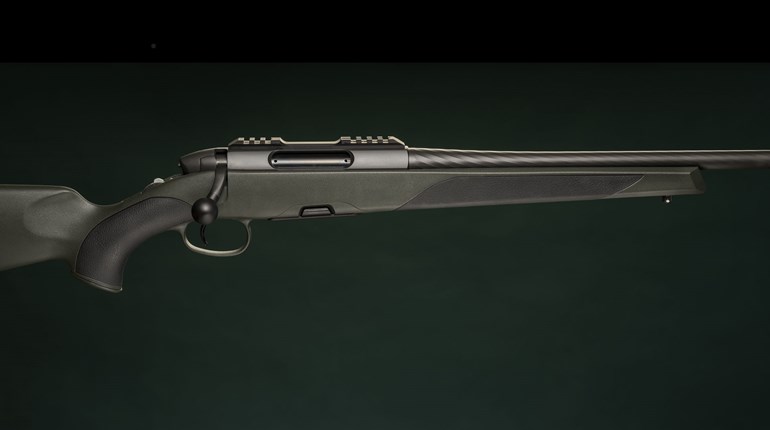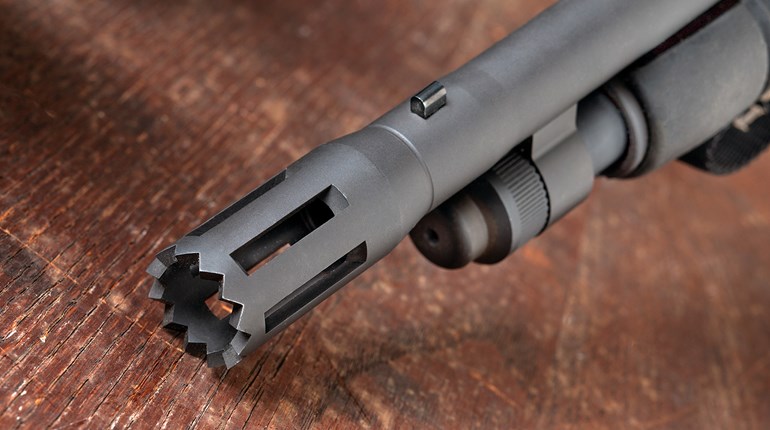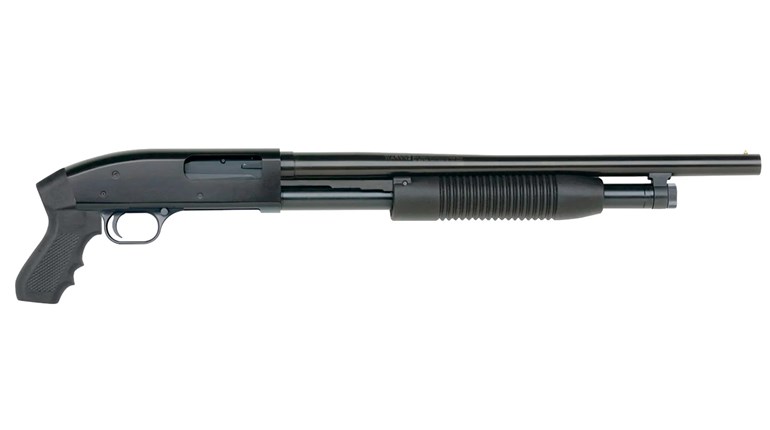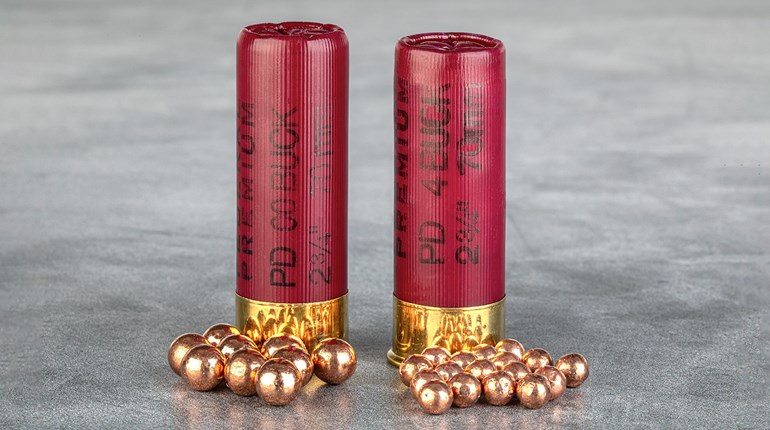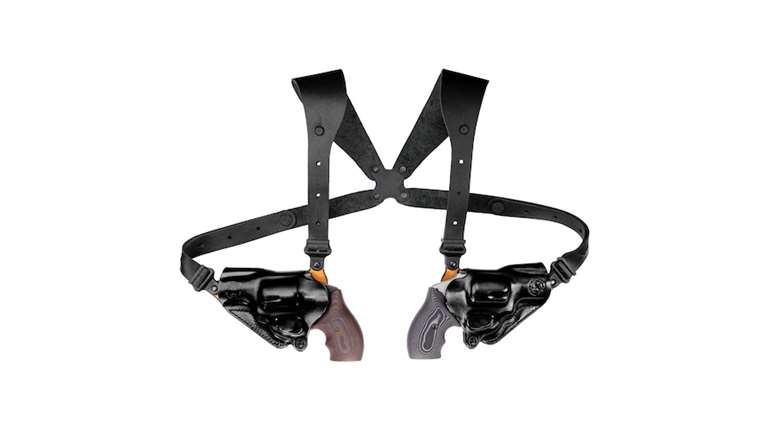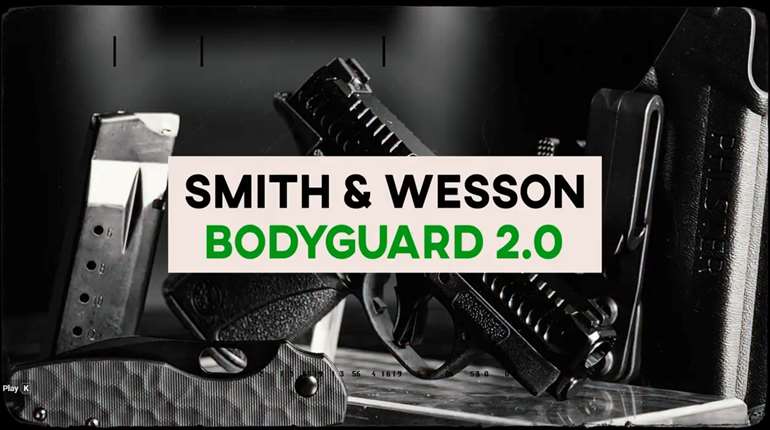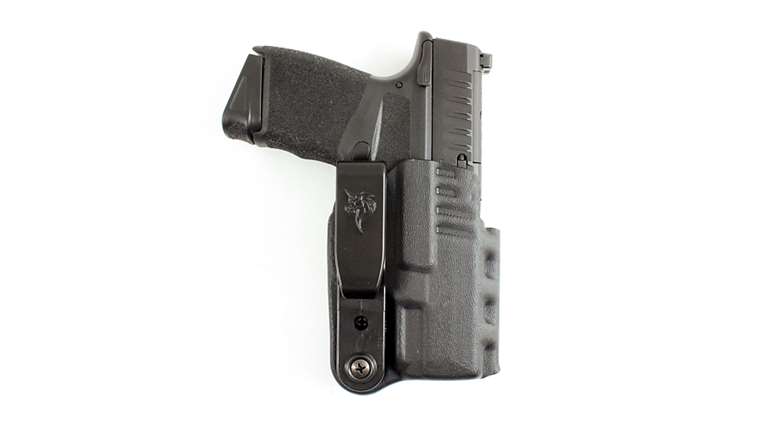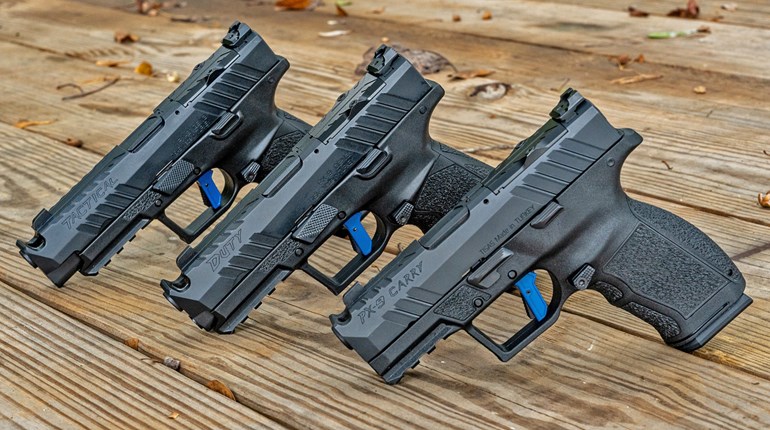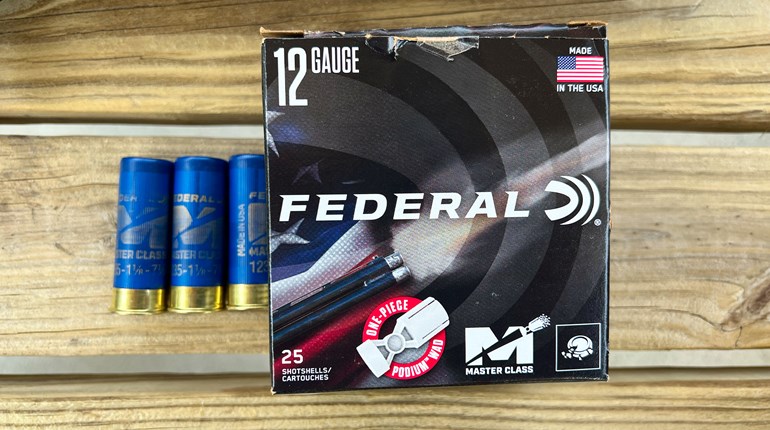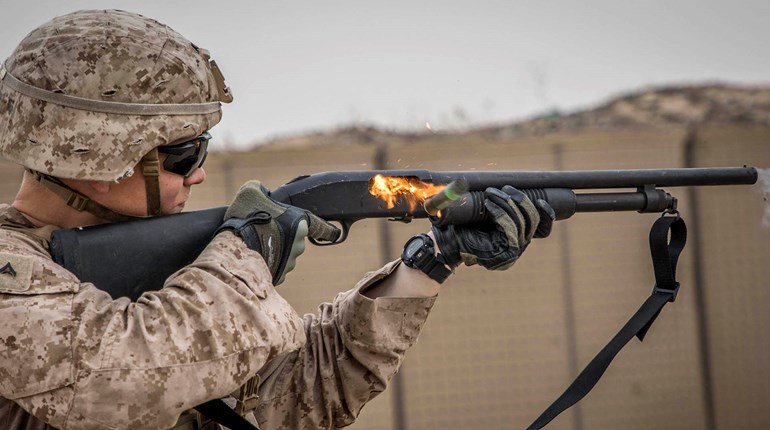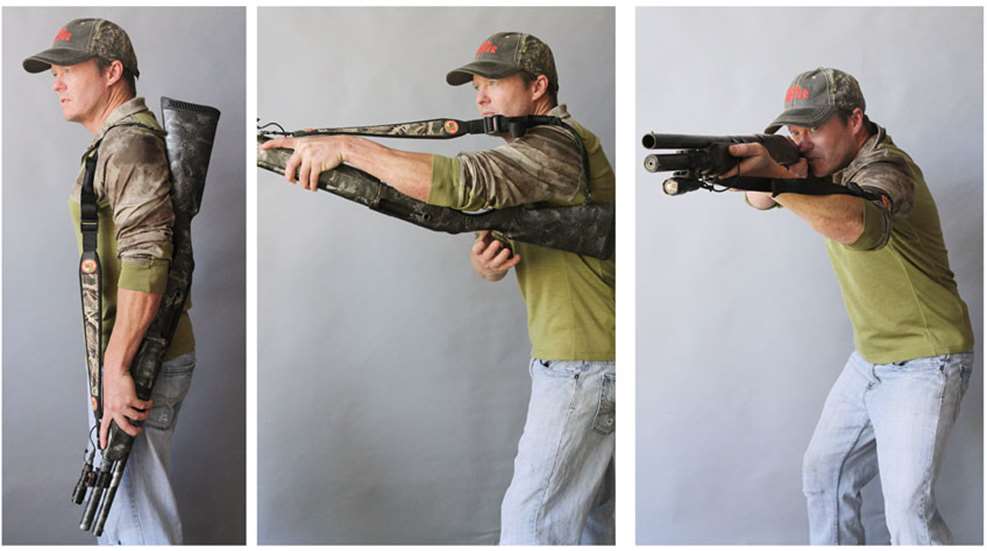
Transitioning from slung to a ready-to-fire position requires frequent practice and training. Experiment to find what works best for you.
A shotgun to a home defender is like a cellphone to your teenage child: Even though they might not want to, at some point they’re going to have to put it down. Trouble is, in a defensive situation, you seldom want to part ways with your shotgun, but yet at some point you’ll need to use your hands to do something else—like calling 9-1-1 or shepherding a child—so a sling is needed. Indeed, think of a sling to a shotgun as the equivalent of a holster to a handgun.
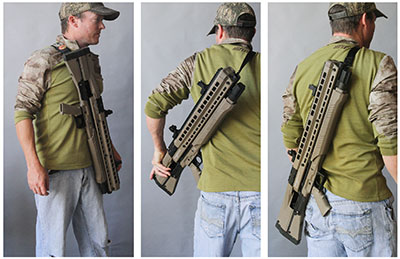
While just about any sling—or even a sturdy piece of strap or rope—will work, opinions vary as to ideal sling styles and setups. Fact is, single-, two- and three-point slings all have their merits and their downsides. For example, a single-point sling leaves the front half of the shotgun unfettered so it cannot become entangled with your hand, a flashlight or a pump gun’s operation.
However, I don’t like single-point slings because they allow the shotgun to swing and dangle when the gun is slung, tripping me when I run or striking me in lower areas even when walking. For super-short shotguns on super-tall folks, a single-point sling would probably be worth taking a look at.
A three-point sling is the most versatile and can be configured to be used with the simplicity of a two-point sling and the speed and readiness of a specialized tactical sling. But, ultimately, I find all the sliding parts, buckles, attachment points and loops to be more complex than I need and more susceptible to snagging.
While just about any sling—or even a sturdy piece of strap or rope—will work, opinions vary as to ideal sling styles and setups.
My favorite shotgun sling style is a simple two-point sling that attaches (if possible) to the side of the buttstock or the top-rear of it. The front of the sling should attach to the end of the fore-end cap sling stud, or, if your shotgun doesn’t have a sling stud, it can be attached to the barrel or mag tube in front of the fore-end so it doesn’t impede operation or handling.
I prefer a sling that adjusts so that the loop formed is tight enough to keep the gun relatively tight to my body when I move, but not so tight that I can’t rotate it up and around to shoot or take it off in a hurry. New tactical stocks like Magpul’s SGA, Remington’s VersaMax Tactical stock, Benelli’s M4-style stocks and many others feature side-mounted attachment points for slings that allow the gun to lay flat against the body. These are desirable, but not mandatory.
I have tried slings with built-in shell loops, and while these may seem as snazzy as socks on a rooster, shotgun shells are heavy, and when they swing under the gun as you try to shoot, their momentum can easily pull your shots off target. It’s very disconcerting. So if the sling you have contains shell loops, use the sling if it works for you, but store your extra shells elsewhere.
Sling-Carry Techniques
There are myriad sling techniques for carry, but being a right-handed shooter, I prefer slinging the shotgun barrel down, buttstock behind my left shoulder while holding the shotgun close to my left hip with my left hand. If I need the shotgun in a hurry, I can simply rotate it up and across my chest so that it comes up quickly and on target. This method also frees my right hand for other tasks. However, plenty of shotgun gurus sling their shotgun barrel up across their back, while others prefer barrel down, slung over the right shoulder. Simply spend a few range sessions trying various positions to find what you prefer.
Tactical-Sling Techniques
For fighting with a shotgun, I prefer slinging it by placing my left arm and head through the loop of the sling so that the shotgun rests across my chest with the buttstock nearest my right shoulder pocket while the barrel angles down between my left hip and knee. This allows raising the shotgun to a shooting position quickly. From here, I can simply drop the gun if I need to use my hands, or, if I need to run or be more agile, I can slide it around my body so the gun winds up slung across my back with the barrel just behind my right shoulder, pointing up.
Again, there are plenty of high-speed techniques out there, but this simple technique works for me, mainly because I have grown familiar with it over the years. The key is getting a sling, then finding the best method for you, something best accomplished via copious practice.












